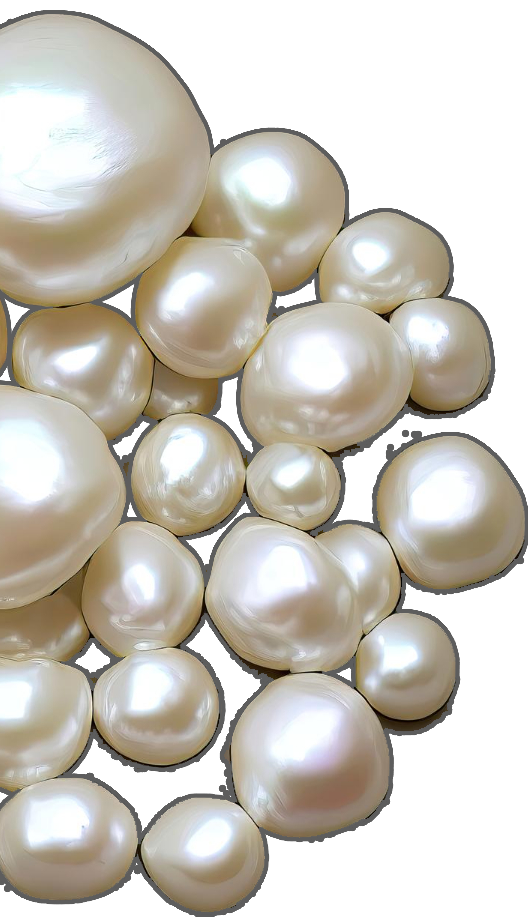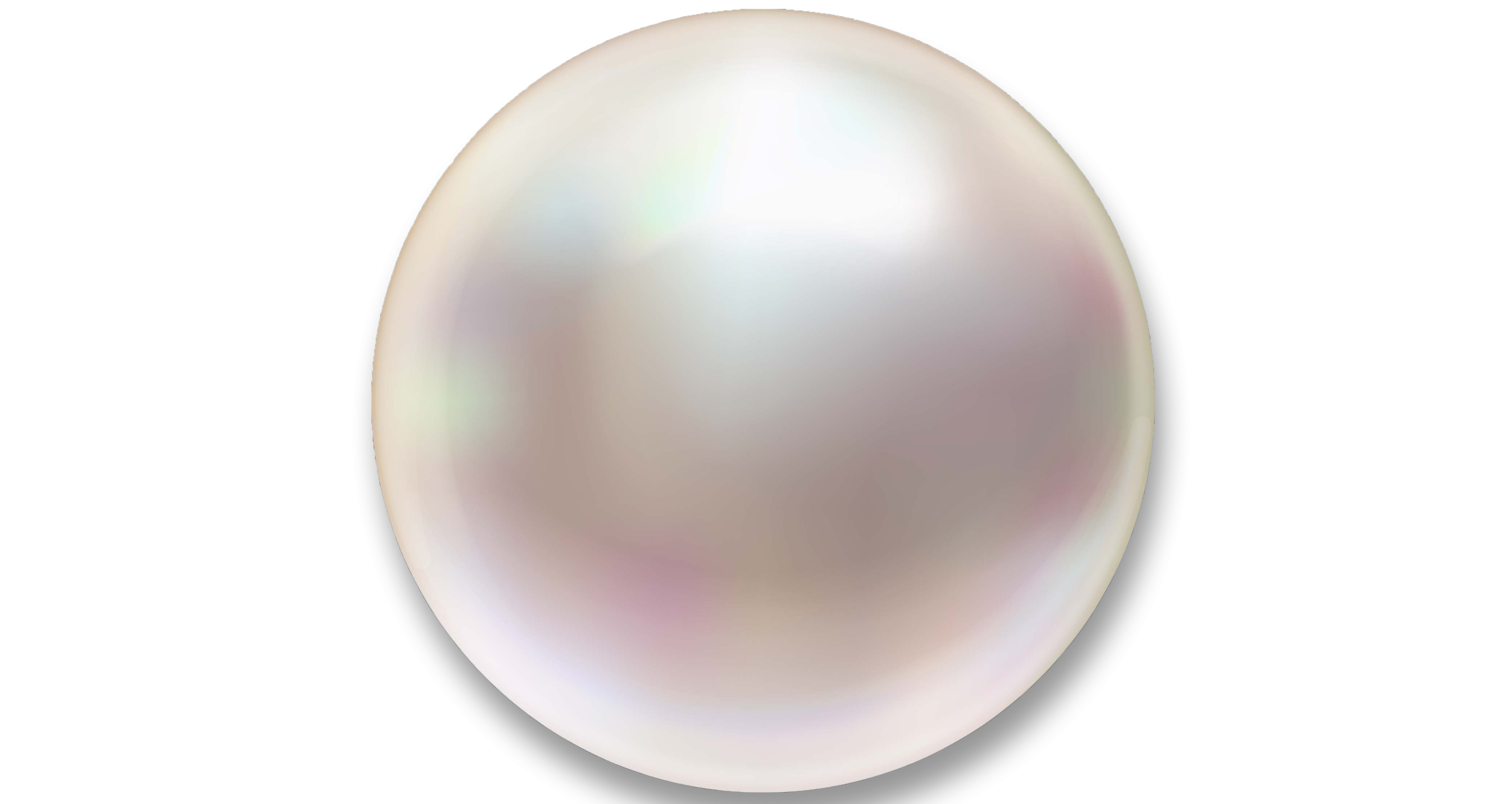Pearl | June
Pearls, as members of a unique family of gems, exhibit a captivating spectrum of colors. Exploring the distinctive color variations within this gem category can offer valuable revelations.
Pearl: The Luminous Gem of June
In the grand tapestry of time, as constellations wove their celestial tales, a tradition as old as the cosmos itself emerged—a celestial connection with Earth through birthstones. Crafted by luminaries like Flavius Josephus, this lore forged an intimate bond between zodiac constellations and earthly gemstones. In this timeless cosmic dance, beneath the gentle glow of June, unfolds the Pearl—a gem that doesn’t just shimmer but resonates with centuries of history and the elegant heartbeat of the universe.
Visualize, through the lens of ancient legends and contemporary wisdom, a gem born in the depths of Earth’s watery embrace, crystallizing within the heart of oceanic realms. Forged by the elements of water and time, the Pearl embodies purity and iridescence, signifying the wisdom and serenity that grace those born in June.
Throughout history, pearls have held a revered place in diverse cultures around the world. They have symbolized purity, femininity, and timeless elegance. Adorning queens, empresses, and noble figures, pearls are a testament to grace and refinement.
With a lustrous array of hues from the purest whites to captivating iridescent colors, the Pearl’s spectrum mirrors the diverse personalities of June’s children. In modern times, science unravels the intricate beauty of pearls, their unique formation, and the secrets they hold about the Earth’s aquatic realms.
Beyond its aesthetic charm, the Pearl transcends into realms of cultural significance, from Eastern wisdom to Western sophistication. Its timeless beauty makes it an enduring choice in jewelry and a source of inspiration for art, literature, and spirituality. At its core, the Pearl is a gem of legends, dreams, and maritime tales.
So, for souls touched by June’s allure, why the Pearl? Because it is more than a gem; it’s a celestial connection, an emblem of grace, and a vessel for both ancient wisdom and contemporary elegance.
In the embrace of the Pearl, one finds the fusion of timeless myths, modern revelations, and the eternal rhythm of the cosmos.

Pearl: The Timeless Elegance of June
Color Varieties: Pearls come in a range of colors, often influenced by the type of mollusk and the environment in which they are formed. Common pearl colors include white, cream, pink, silver, gold, and black. The luster and overtones of these colors are what make pearls such a captivating gemstone.
Notable Pearl Varieties:
- Akoya Pearls: Renowned for their classic, round shape and white to cream color, these pearls are typically cultured in saltwater.
- Freshwater Pearls: These pearls are known for their wide range of colors and irregular shapes, making them a more affordable yet stunning choice.
- Tahitian Pearls: Prized for their dark, exotic hues, Tahitian pearls are produced by black-lipped oysters, resulting in shades of gray, green, and black.
- South Sea Pearls: These large, lustrous pearls are grown in the warm waters of Australia, the Philippines, and Indonesia and come in shades of white, gold, and silver.
Formation and Occurrence: Pearls are formed inside the shells of certain mollusks as a defense mechanism against irritants, such as grains of sand or parasites. Layers of nacre are secreted by the mollusk to encase the irritant, eventually forming a pearl. Cultured pearls, which make up the majority of pearls on the market today, are created with human intervention. Natural pearls are rare and highly valuable, often found by chance in the wild, typically in oysters or mussels.

Modern Uses: Pearls have a timeless appeal and remain a popular choice for jewelry, especially in classic pieces like necklaces, earrings, and bracelets. Their versatility makes them suitable for both formal and casual occasions. Pearls are also used in modern jewelry designs, combining their classic charm with contemporary aesthetics. In addition to jewelry, pearls have found their way into accessories, fashion, and even interior decor, further cementing their enduring popularity. Pearls, with their natural beauty and historical significance, continue to be treasured gems, representing sophistication and timeless elegance for those born in June and all lovers of exquisite jewelry.
Scientific Fact: "Pearl's Geological Significance"

Pearls, although widely celebrated for their exquisite beauty and cultural symbolism, also hold a notable place in the field of geology. These organic gemstones are created by mollusks as a protective response to irritants within their shells. This natural process carries insights into the marine environment and ecosystem, adding to their geological significance.
Pearl formation begins when an irritant, such as a grain of sand or a parasite, enters the mollusk’s shell. In defense, the mollusk secretes layers of nacre, composed of calcium carbonate (CaCO3) and conchiolin, creating the pearl’s lustrous surface. The accumulation of these nacre layers forms the pearl.
The unique geological importance of pearls lies in their ability to act as indicators of past marine conditions and ecosystems. The type of mollusk, the water’s salinity, temperature, and mineral composition influence the pearl’s color and quality. Consequently, pearls can provide valuable information about the health and environmental conditions of the oceans and aquatic habitats.
Different types of pearls, such as Akoya, Freshwater, Tahitian, and South Sea pearls, each offer distinctive insights into the specific marine environments in which they were cultivated. Their colors and qualities reflect the nuances of the waters and ecosystems where the mollusks resided.
Pearls, in addition to their geological relevance, remain timeless symbols of purity, wisdom, and elegance, cherished for their aesthetic and cultural significance. They seamlessly bridge the worlds of science, beauty, and symbolism, enriching our understanding of the Earth’s natural history.
